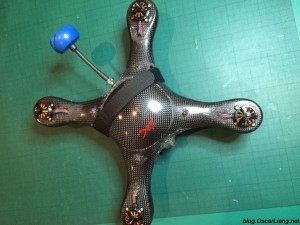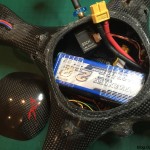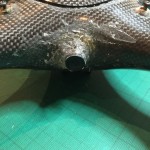“If the planet is 70% water why don’t people fly their quadcopters in the water?”
“Because quadcopters are not water proof ?”
Oh Well, think again.
With the help of a water proof quadcopter frame, flying (or swimming if you prefer) under water is entirely possible without too much hassle, such as the Dex frames (I’m sure there are others).
This project was shared with us from SeekND FPV. Check out his video of the result below.
Water Proof Quadcopter Frame
Built to last (if you pick the carbon version) and as small as 300mm these things are waterproof and more importantly buoyant!
They even have a smaller racing frame but it’s neither of the above (waterproof or buoyant).
I purchased the 300mm Mini Dex quad for myself and was amazed on how strong this thing is. I’m not afraid to drop it in the floor or concrete as I’m sure it will take the hit well (or even worse ones) without a scratch.
Unfortunately the frames lack the foresight or usability for FPV. Even worse, if you pick the carbon version and have all antennas inside the frame you will be hard pressed to get a proper signal (video or control) past 20 meters.
Also, the frame is bowled at the bottom and offers no internal or external mounts.
Luckily this is a simple DIY job if you are not afraid of drilling stuff and using hot glue.
The Build
What I did was to simply use a plastic FC mount and hot glue the hell out of it to the curvy bottom of the frame. Then I simply attached my ESCs that I forcefully inserted into the arms and soldered all remaining cables.
I didn’t even care to use a PDB. I simply soldered all negative cables and positive cables together together with the power connector.
Don’t forget to connect a Bluetooth cable to your FC or an angled USB connector as it’s pretty hard to access your FC otherwise.
I’m using 1400KV motors capable of spinning 9″ props without issues. The best way of securing your motors is to use motor mounts and secure those with wood screws.
These grab on into the frame without the possibility of leaking. Don’t worry about the motors, they are waterproof!
With this setup, It’s weights around 470g without battery and GoPro camera. With everything it weights 850g. I managed to do a 18 minute flight using 2200mah 3S battery.
FPV and Video Recording
Attach your favourite curved mount at the bottom (i used gopro mount and waterproof case) and you’re already half way there in order to at least record some proper underwater footage – LOS.
It gets a bit trickier when it comes to the FPV counterpart.
You will need to find an appropriate place to place your lens and drill a hole that is the exact size (slightly smaller is better) where you can screw your lens in and plug it to the inside.
Make sure to get the lens as close as possible to the frame as to create the least possibility for water to go in.
Also, if you put the lens below the buoyancy point you will be able to FPV UNDERWATER!! :O
Water-Proof Everything
You should also consider adding silicone gel to any orifice that will be exposed to water.
This means:
- Lens that is in contact with the outside part of the frame
- Holes you will need to need to drill for the motor wires
- any other holes that you drilled to get the VTX or control antennas exposed outside the frame
As for the lid, if you are not planning of going to the water a simple velcro or even elastic bands will suffice to keep the lid in place and the electronics away from the rain.
For watery adventures you will need to waterproof it in case it lands upside down on the water (which it will on your very first try according to Murphy’s Law).
My answer to this was to create a layer of silicone gel goo on the frame and on the bottom of the lid where they both meet and then use a velcro strap to secure the lid.
Another alternative would be to use some sort of o-ring in between the lid and frame.
Water is terrible when it comes to VTX signal propagation and if your antenna goes in the water you will be sure to lose all signal.
As long as your craft is well sealed it IS possible to flip it upside down as long as you still have control of the craft (and your FC allows it).
That’s pretty much all.
Have fun exploring the murky depths of your local lake but please don’t go upsetting any ducks!
Ducks are necrophiliacs and you don’t want to mess with that, do you???













8 comments
Is there no waterproofing needed on the motors?
Hi Oscar, i would like to ask how you were able to fly it for 18 mins with only 2200 3S lipo??? I think with this total weight 850g (as you wrote) it is almost impossible to fly that long (maybe with LI-ION pack but i dont know for sure). Can you post list of components (which motors, esc´s and so on…) which you used i this build? Did you have not problem with ESC cooling when it was waterproof sealed? Thank you for answers.
Hi Oscar,
Do you have any reports on how it flies? Any video?
I live on a small Caribbean Island so flight space is limited…unless I could use the ocean!
Daryl
probably not a good idea to fly under water after all, 2.4Ghz radio signal doesn’t work well under water… you can probably handle a few feet… but any deeper you are risking your model
Hi Oscar!
Very nice! but i dont understand, i tought radio waves dint travel under water? so how can the quad be controlled while its under water?
Just don’t go too deep into water, and make Radio RX antenna longer pointing up should also help.
by the way, I recommend joining this forum, it’s very useful and there are lots of helpful people there. I am a daily user too :) http://intoFPV.com
Hi Oscar,
I ‘waterproofed’ my racer because of the weather here in the Netherlands. Not really suitable for underwater flying, but no problems with wet grass and small puddles. I did this by dipping all the electronics in Corrosion X. Special treatment for the ESC’s (as they are most likely to burn out after getting wet): I put some hot glue on the ends before resealing the shrink tubing. Works really well, haven’t seen any magic smoke!
Kind regards,
Dirk
That’s a nice tip Dirk :) I really like it!
lastly, i would really appreciate it if you could join the forum: http://intoFPV.com … I don’t want to miss your comment, because I only check my blog comments once a week, but I use the forum daily!